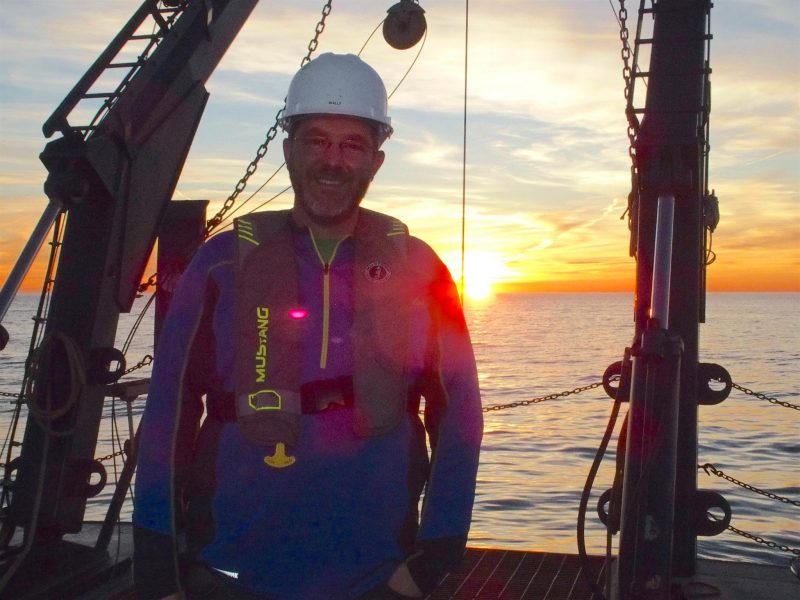
Andrew Barnard shares his knowledge on Husky Bites, a free, interactive webinar this Monday, June 15 at 6 pm. Learn something new in just 20 minutes, with time after for Q&A! Get the full scoop and register at mtu.edu/huskybites.
Let’s say you wanted to quiet the loud auxiliary power unit on a large Abrams tank or any other loud noisy contraption. Would carbon nanotubes, thinner than a human hair, immediately come to mind? Probably not—but that is exactly the solution that Andrew Barnard has developed.
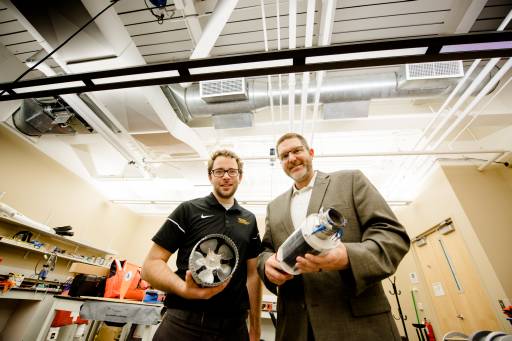
“Carbon nanotubes can oscillate their surface temperature almost instantaneously to produce noise canceling sound waves,” he explains. His technology—a coaxial active exhaust noise control system—is based on using a thin film of carbon nanotubes as a thermophone, or loudspeaker.
Why else use carbon nanotubes? “The material is flexible and stretchable, with no moving parts, and you can put it practically anywhere,” he says. “Plus, it weighs next to nothing. Four ounces of the material will cover an acre.”
“Building with Lego sets as a kid is probably what sparked my design and engineering mindset,” says Andrew Barnard. Fast forward about 30 years. Barnard is now an associate professor in the Department of Mechanical Engineering-Engineering Mechanics at Michigan Tech, specializing in the field of acoustics, vibration, and noise control engineering. He is the Director of the Great Lakes Research Center. He is advisor of Michigan Tech’s Strategic Education through Naval Systems Experiences (SENSE) Enterprise team. Last year he earned the Michigan Tech Distinguished Teaching Award. And he knows what it’s like to be a Michigan Tech student; he earned both his bachelor’s and master’s degrees in mechanical engineering at Tech before heading to Penn State for a PhD in acoustics.
Barnard is faculty advisor to Michigan Tech’s SENSE (Strategic Education through Naval Systems Experience) Enterprise. It’s a relatively new team. Students design, build, and test engineering systems with a focus on Navy applications in all domains: space, air, land, sea, and undersea. Like all of SENSE is open to students in any major. The Nautical Emergency Rescue Device (NERD) is the team’s longest-running project.
Q: What exactly is the NERD?
It’s like a mechanized life ring. If you’ve got someone 100 yards offshore, it takes away the danger of swimming out to them or the time it takes to get a boat. A life ring can only be thrown maybe 25 yards and if it’s windy it’s hard to get the life ring to the person. The NERD uses plastic PVC piping, low-cost remote vehicle propellers and the same controls used for remote-controlled planes and boats. The project is sponsored in part by the Keweenaw Bay Indian Community.
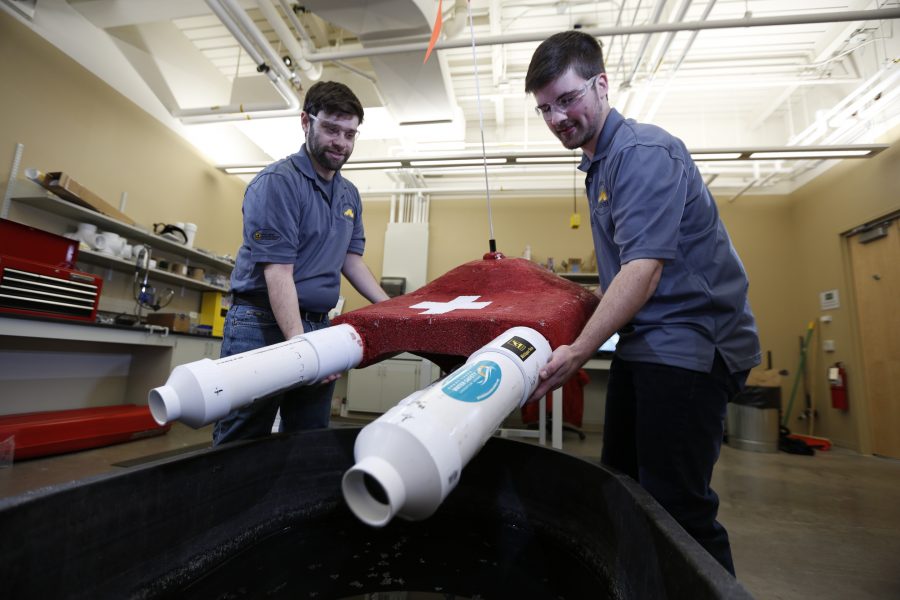

“I like to tell students on the SENSE team that I don’t do anything, they do everything, I’m just there to make sure they don’t go off the rails; to help them work through that design process, to watch them fail and help them pick themselves up and succeed.”
Q: What is your research focus?
I do acoustics in general. What I’m interested in is making mechanical things quiet. I tend to work on any type of system with rotating equipment: ship propellers, hard drives, hydraulic systems. That is to say, anything moving that creates sound or is affected by sound.
“It’s a very customer-centered research field because everyone has a set of transducers built into their heads—ears.”We have lots of customers to talk to and lots of customer problems to fix because certain sounds drive people nuts.
We have the same problems under water. The overall background noise in the ocean has been rising steadily since WWII. How does that affect marine mammals and fish species? How does their behavior change based on ambient noise background? That’s what we’re trying to find out.
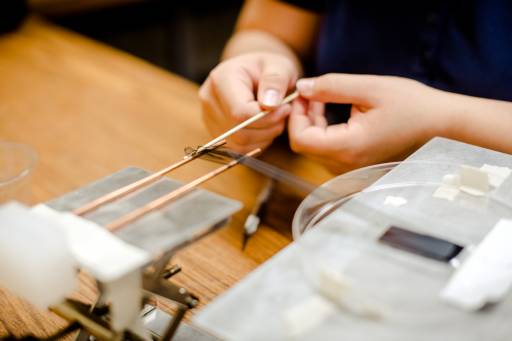
Andrew Barnard and his students work on developing flexible and stretchable nanotube speakers.
Q: How do you like to learn?
I had lots of great professors when I was a student here at Michigan Tech; Chuck Van Karsen is a good example. Chuck was a terrific professor, knew the material back and forth, but would take the time to teach it to you. He was always showing us how we could relate the pieces of an equation to things in real life that we touch every day. I thought those types of lessons were really helpful in learning the material, so I try to bring those kinds of things into my classes as well. I’ve had so many good professors it’s hard to single out just a few.
“Everyone has a set of transducers built into their heads—ears.”
Q: How did you know you wanted to be an acoustic engineer?
In college, I did several internships. Two of them taught me what I didn’t want to do, a very valuable lesson. The third one was working on noise control of tractors with John Deere. That sparked my interest in the field and propelled me on to graduate school to learn more. I’ve had mentors over the years that have been vital to keeping me pursuing the long and winding path to my current position.
Q: Can you tell us more about your growing up?
I was born and raised outside of Sturgeon Bay, Wisconsin, cradled between Lake Michigan and the bay of Green Bay. I come from a long line of teachers. My mother was a kindergarten teacher and both my grandmothers were teachers. In my free time nowadays I enjoy hiking and waterfalling in the UP with my wife, Becky, entertaining our dog, and playing mediocre rounds of golf.
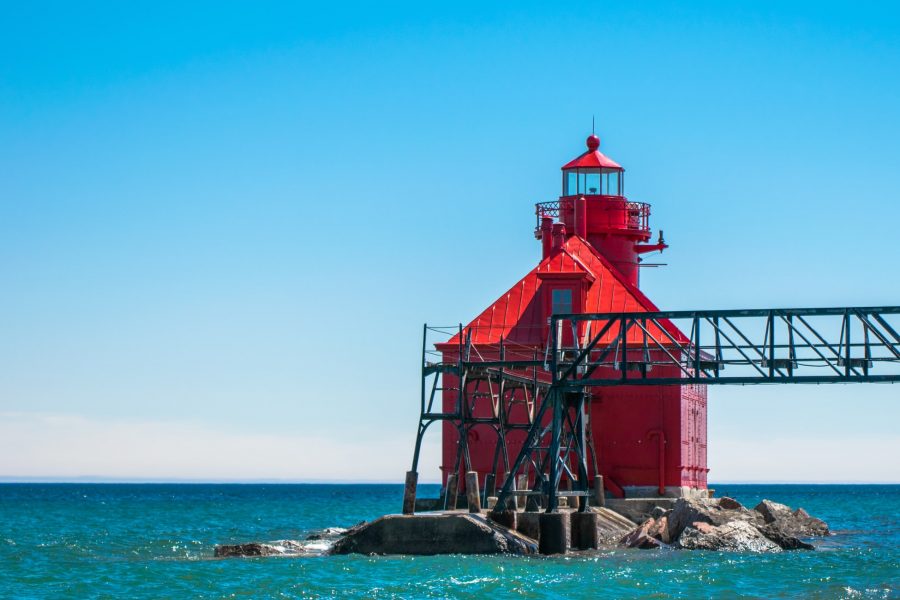
Learn More
Q&A with Michigan Tech Teaching Award Winner Andrew Barnard
Q&A with Great Lakes Research Center’s Andrew Barnard
Want to know more about Husky Bites? Read about it here.
